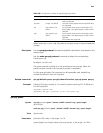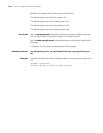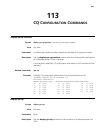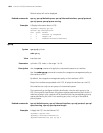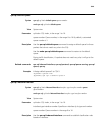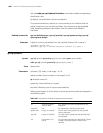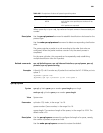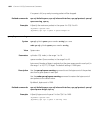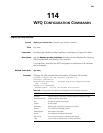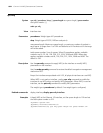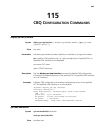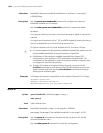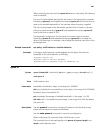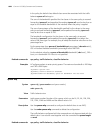
1821
When queue-key is tcp or udp, key-value can be port name or the associated port
number.
Description Use the qos cql protocol command to establish classification rules based on the
protocol type.
Use the
undo qos cql protocol command to delete corresponding classification
rules.
The system matches a packet to a rule according to the order that rules are
configured. When the packet matches a certain rule, the search process is
completed.
For the same cql-index, this command can be repeatedly used, establishing
multiple classification rules for IP packets.
Related commands: qos cql default-queue, qos cql inbound-interface, qos cql queue, qos cql
protocol, qos cql queue serving.
Examples # Specify CQ rule 5 to make any IP packet that matches the ACL 3100 be put into
queue 3.
<Sysname> system-view
[Sysname] qos cql 5 protocol ip acl 3100 queue 3
qos cql queue
Syntax qos cql cql-index queue queue-number queue-length queue-length
undo qos cql cql-index queue queue-number queue-length
View System view
Parameters cql-index: CQL index, in the range 1 to 16.
queue-number: Queue number, in the range 0 to 16.
queue-length: The maximum length of the queue, in the range 0 to 1024. The
default value is 20.
Description Use the
qos cql queue command to configure the length of a queue, namely,
the number of packets a queue can hold.
Use the
undo qos cql queue command to restore the default.
udp Port number, 0 to
65535
Any IP packet whose source or destination UDP
port number is the specified port number will be
classified.
-- -- All IP packets are enqueued.
Table 484 Descriptions of values of queue-key and key-value
queue-key key-value Description





